J. Darby Smith
AI-Guided Codesign Framework for Novel Material and Device Design applied to MTJ-based True Random Number Generators
Nov 01, 2024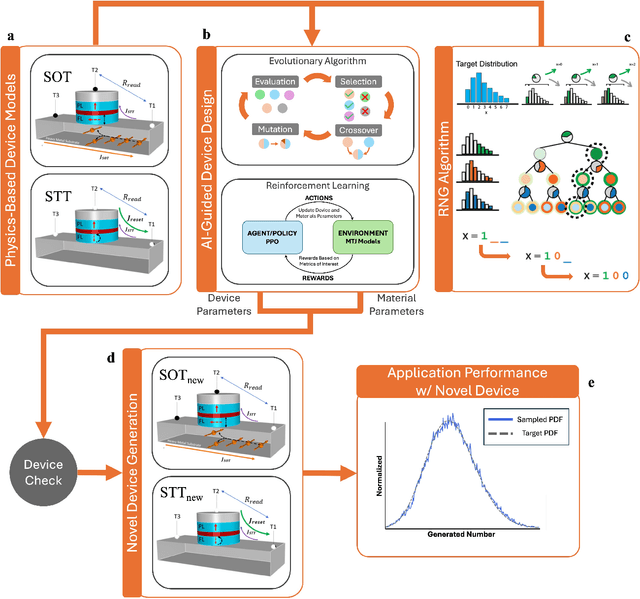
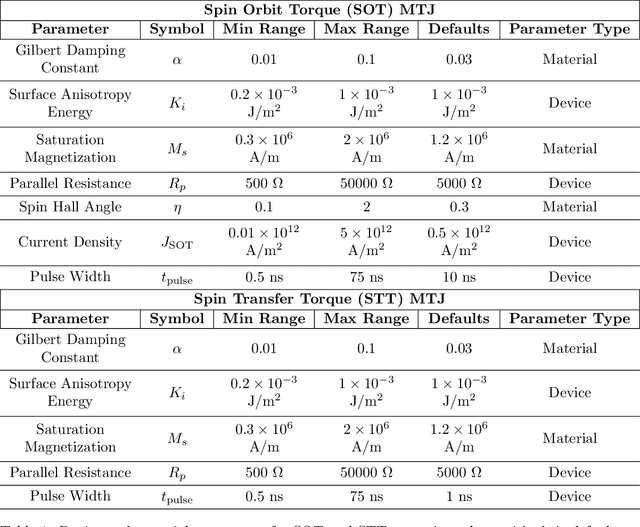
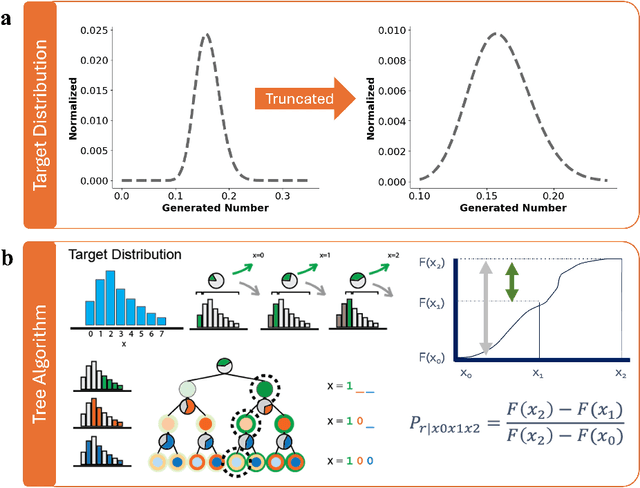
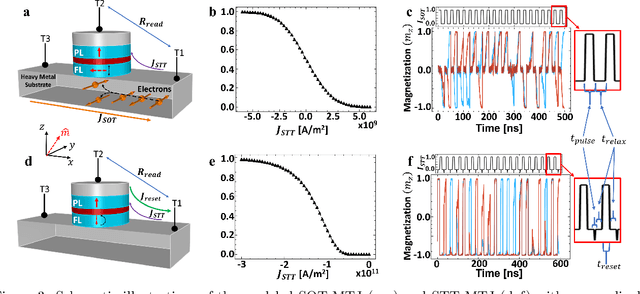
Abstract:Novel devices and novel computing paradigms are key for energy efficient, performant future computing systems. However, designing devices for new applications is often time consuming and tedious. Here, we investigate the design and optimization of spin orbit torque and spin transfer torque magnetic tunnel junction models as the probabilistic devices for true random number generation. We leverage reinforcement learning and evolutionary optimization to vary key device and material properties of the various device models for stochastic operation. Our AI guided codesign methods generated different candidate devices capable of generating stochastic samples for a desired probability distribution, while also minimizing energy usage for the devices.
Synaptic Sampling of Neural Networks
Nov 21, 2023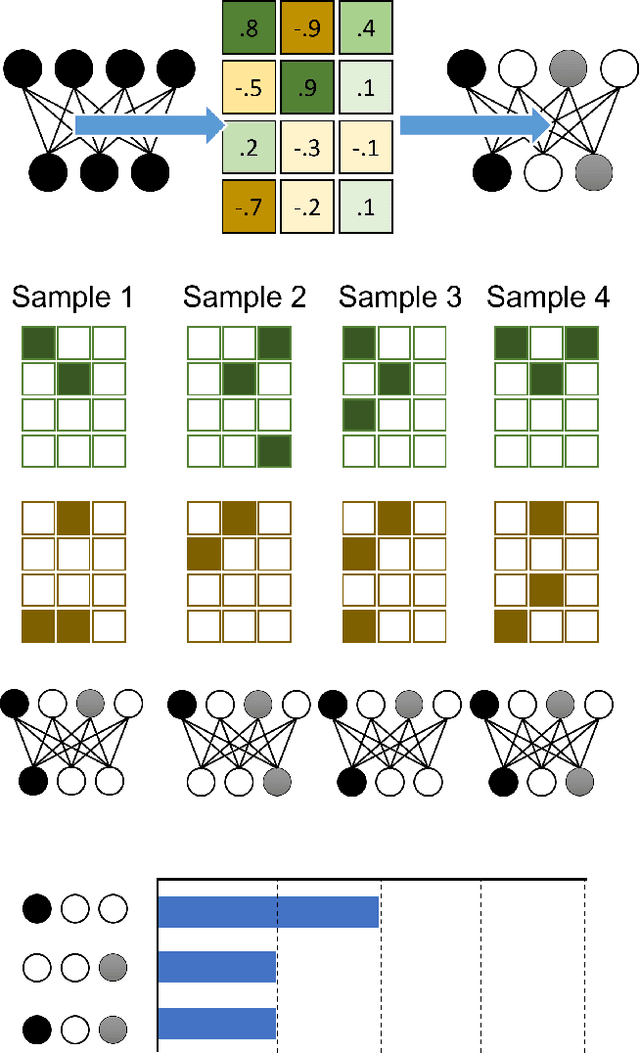
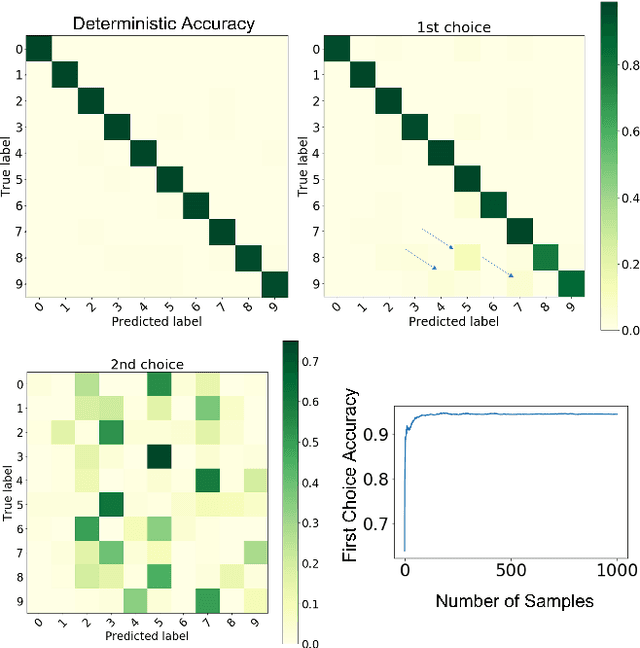
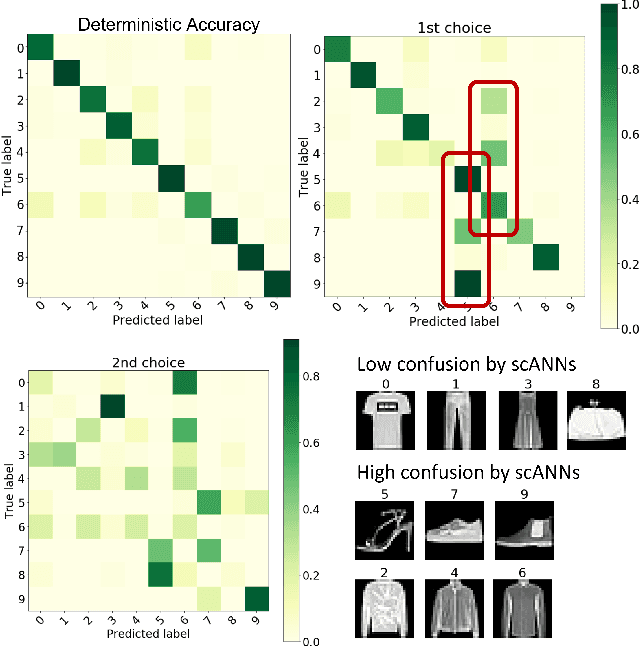
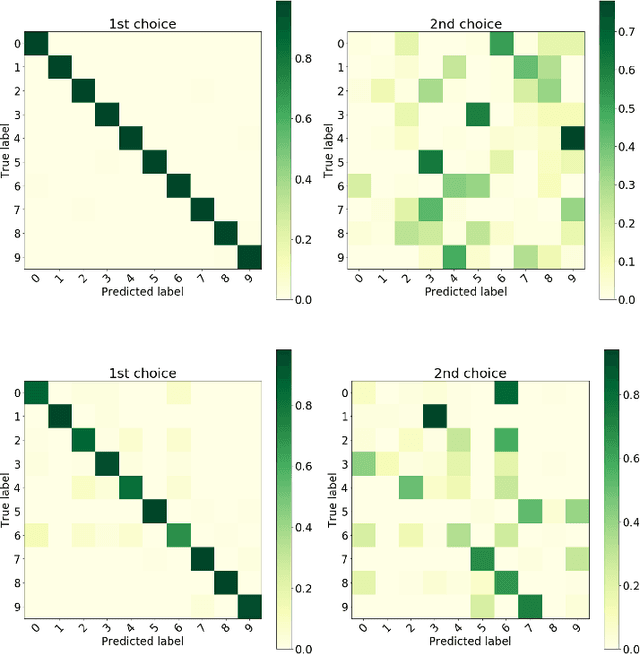
Abstract:Probabilistic artificial neural networks offer intriguing prospects for enabling the uncertainty of artificial intelligence methods to be described explicitly in their function; however, the development of techniques that quantify uncertainty by well-understood methods such as Monte Carlo sampling has been limited by the high costs of stochastic sampling on deterministic computing hardware. Emerging computing systems that are amenable to hardware-level probabilistic computing, such as those that leverage stochastic devices, may make probabilistic neural networks more feasible in the not-too-distant future. This paper describes the scANN technique -- \textit{sampling (by coinflips) artificial neural networks} -- which enables neural networks to be sampled directly by treating the weights as Bernoulli coin flips. This method is natively well suited for probabilistic computing techniques that focus on tunable stochastic devices, nearly matches fully deterministic performance while also describing the uncertainty of correct and incorrect neural network outputs.
Stochastic Neuromorphic Circuits for Solving MAXCUT
Oct 05, 2022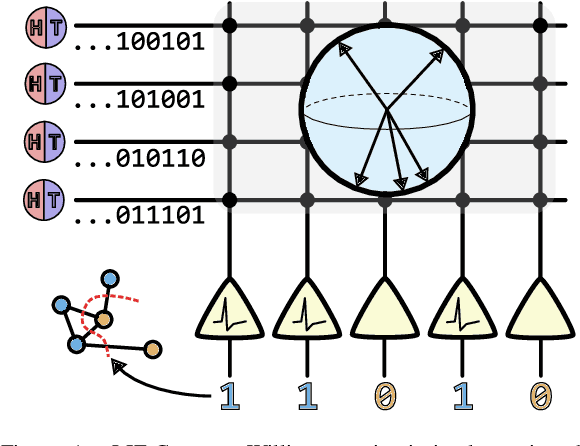

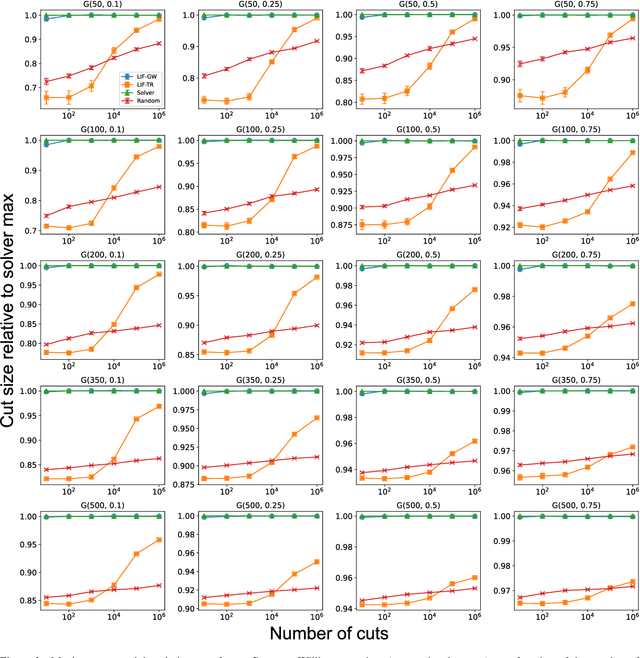

Abstract:Finding the maximum cut of a graph (MAXCUT) is a classic optimization problem that has motivated parallel algorithm development. While approximate algorithms to MAXCUT offer attractive theoretical guarantees and demonstrate compelling empirical performance, such approximation approaches can shift the dominant computational cost to the stochastic sampling operations. Neuromorphic computing, which uses the organizing principles of the nervous system to inspire new parallel computing architectures, offers a possible solution. One ubiquitous feature of natural brains is stochasticity: the individual elements of biological neural networks possess an intrinsic randomness that serves as a resource enabling their unique computational capacities. By designing circuits and algorithms that make use of randomness similarly to natural brains, we hypothesize that the intrinsic randomness in microelectronics devices could be turned into a valuable component of a neuromorphic architecture enabling more efficient computations. Here, we present neuromorphic circuits that transform the stochastic behavior of a pool of random devices into useful correlations that drive stochastic solutions to MAXCUT. We show that these circuits perform favorably in comparison to software solvers and argue that this neuromorphic hardware implementation provides a path for scaling advantages. This work demonstrates the utility of combining neuromorphic principles with intrinsic randomness as a computational resource for new computational architectures.
Neuromorphic scaling advantages for energy-efficient random walk computation
Jul 27, 2021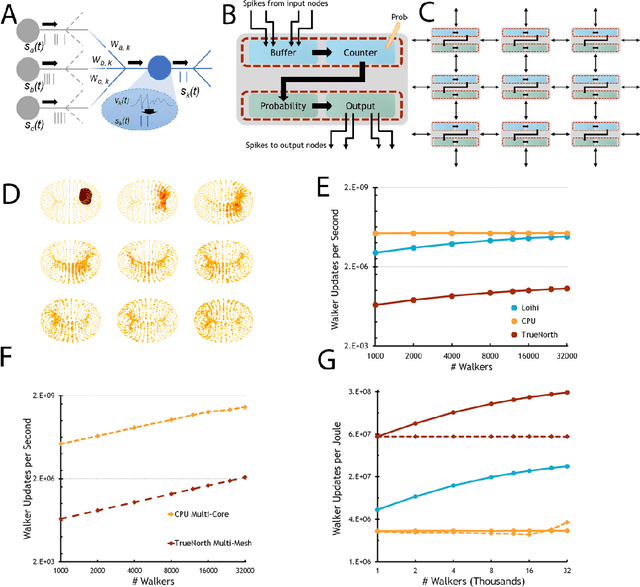


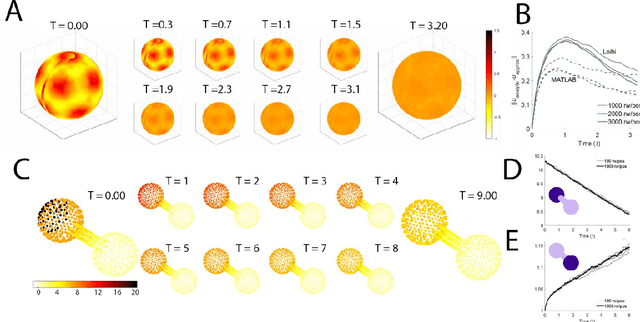
Abstract:Computing stands to be radically improved by neuromorphic computing (NMC) approaches inspired by the brain's incredible efficiency and capabilities. Most NMC research, which aims to replicate the brain's computational structure and architecture in man-made hardware, has focused on artificial intelligence; however, less explored is whether this brain-inspired hardware can provide value beyond cognitive tasks. We demonstrate that high-degree parallelism and configurability of spiking neuromorphic architectures makes them well-suited to implement random walks via discrete time Markov chains. Such random walks are useful in Monte Carlo methods, which represent a fundamental computational tool for solving a wide range of numerical computing tasks. Additionally, we show how the mathematical basis for a probabilistic solution involving a class of stochastic differential equations can leverage those simulations to provide solutions for a range of broadly applicable computational tasks. Despite being in an early development stage, we find that NMC platforms, at a sufficient scale, can drastically reduce the energy demands of high-performance computing (HPC) platforms.
Solving a steady-state PDE using spiking networks and neuromorphic hardware
May 21, 2020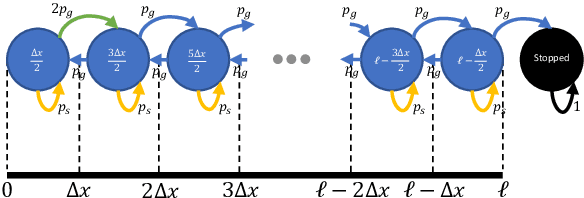
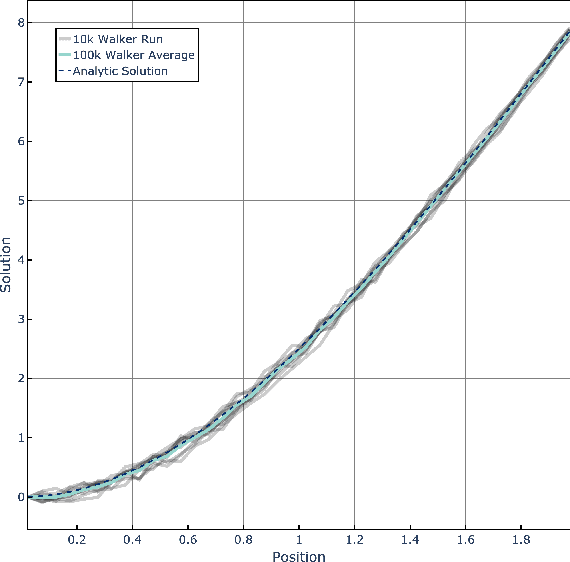
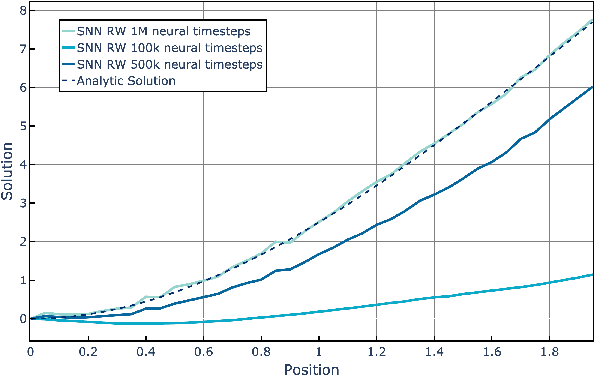
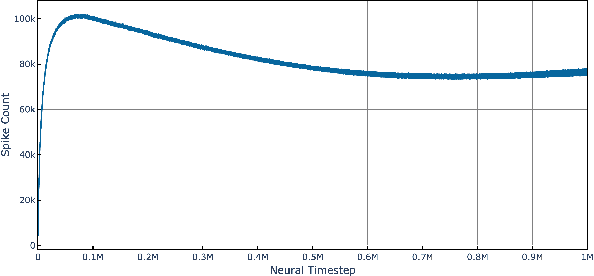
Abstract:The widely parallel, spiking neural networks of neuromorphic processors can enable computationally powerful formulations. While recent interest has focused on primarily machine learning tasks, the space of appropriate applications is wide and continually expanding. Here, we leverage the parallel and event-driven structure to solve a steady state heat equation using a random walk method. The random walk can be executed fully within a spiking neural network using stochastic neuron behavior, and we provide results from both IBM TrueNorth and Intel Loihi implementations. Additionally, we position this algorithm as a potential scalable benchmark for neuromorphic systems.
 Add to Chrome
Add to Chrome Add to Firefox
Add to Firefox Add to Edge
Add to Edge